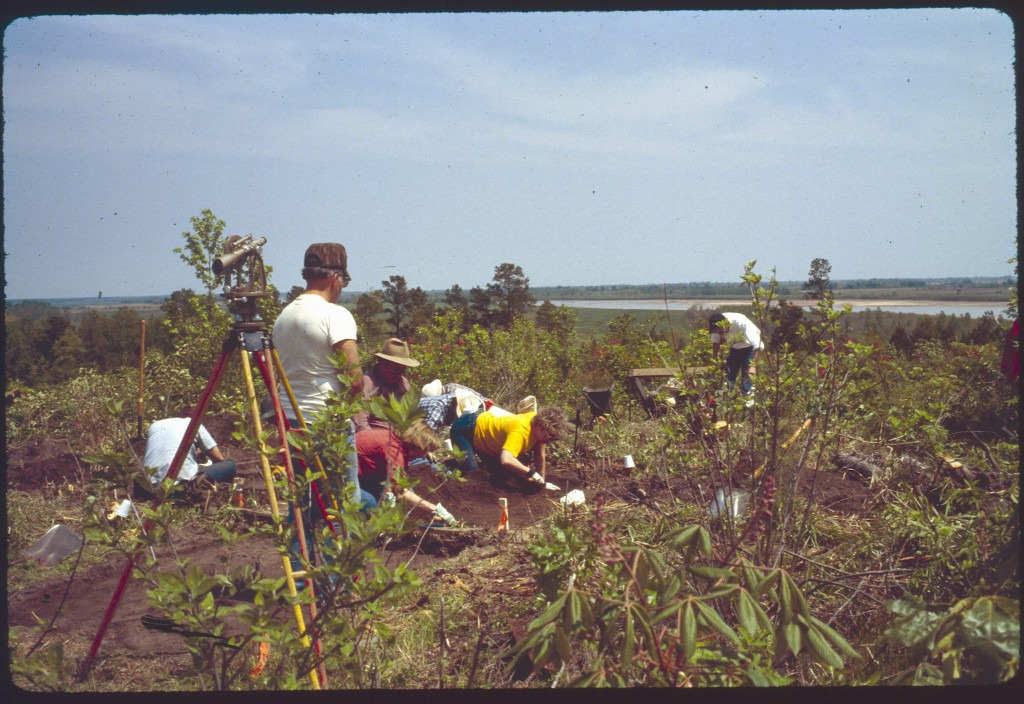The United States government established the Fur Trade Factory System in 1795 under President George Washington in an attempt to use nonprofit trading to strengthen relations with Native American tribes—marketing it as an honest alternative to private trade. The Sulphur Fork Factory in Miller County, Arkansas, was one of 31 of the trading posts created through the program. It is located in the southwestern part of the state, originally built in 1818 on a high ridge that is part of a 5-mile bluff line at the junction of the Red and Sulphur rivers—hence the name “Sulphur Fork.” It enjoyed a few years of successful trading until the federal program was dismantled entirely in 1822.
Sulphur Fork was originally led by Chief Factor John Fowler, who became plagued with health problems shortly after the trading post was established. He also became frustrated with the military overseeing the trading posts for not doing enough to remove illegal traders who often traded cheap whiskey for expensive furs and encroached upon Native land. He eventually quit and was replaced as chief factor by William McClellan, who stayed there until the fur trade factory system was shut down. After it ended, however, a licensed trader was allowed to remain at Sulfur Fork for a few more years. Sulphur Fork received beaver pelts, deer skins, deer tallow, bear oil, beeswax and honey from local tribes in exchange for flour, salt, tobacco, guns, ammunition, and European goods.
The site was eventually abandoned and its location was forgotten until 1988 when avocational archaeologist Claude McCrocklin of Shreveport, Louisiana, rediscovered it. According to his obituary, McCrocklin took up archaeology after retirement, and with his field secretary and nephew, recorded more than 600 archaeological sites in Louisiana, Texas, and Arkansas, becoming a noted archaeologist and friend of the Caddo Nation. At the time of its rediscovery, Sulphur Fork was covered by low brush and grass except for eroded areas on a slope where European and Native ceramics were found. The site was tested by the Arkansas Archaeological Survey and a local archaeological society in the 1980s, and the work was first published by McCrocklin. The group excavated part of Fowler’s barracks at Sulphur Fork Factory, confirming the accuracy of a detailed description found in his journal. Among the artifacts found were pewter infantry buttons, several eagle and cannon buttons, and a light dragoon button, all dating between 1812 and 1816. There were also several gun flints of both English and French origin. Household artifacts that may have also been traded—such as a thimble, scissors, a cast iron kettle, and clay pipe fragments—were found.
In 1983, Potlatch Deltic Corporation, a timber company, purchased the tract where the remains of the Sulphur Fork Factory were located. Throughout its ownership, the company avoided the site when harvesting timber to preserve the area, and recently decided to sell the land. The Archaeological Conservancy was contacted by Carl Drexler (then an archaeologist with the Arkansas Archaeological Survey) and negotiations began, resulting ultimately in the Conservancy purchasing approximately 6 acres that contain the remains of the trading post. PotlatchDeltic should be commended for its stewardship of the site, and its willingness to survey a smaller parcel of a large tract to sell for preservation.




